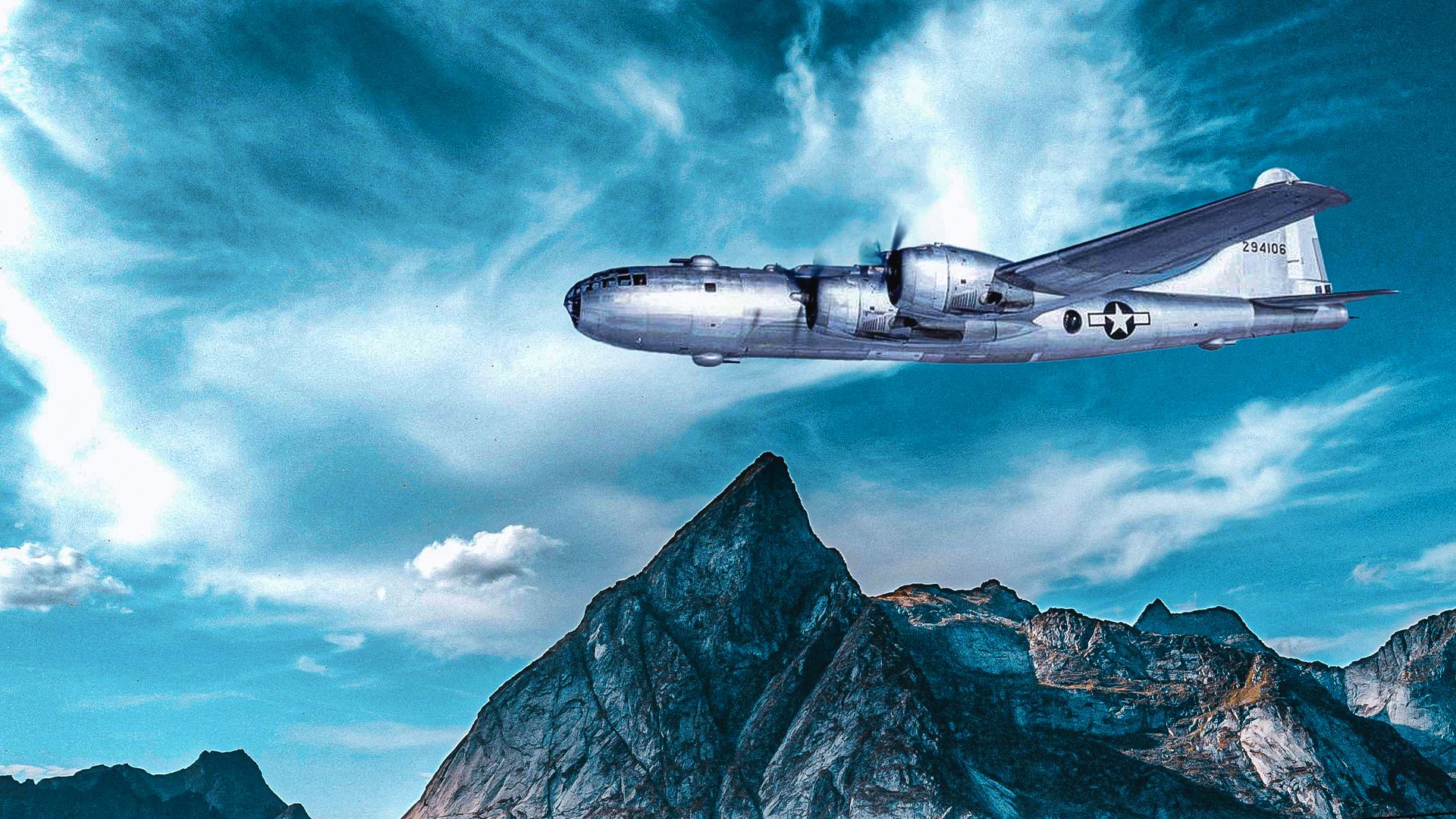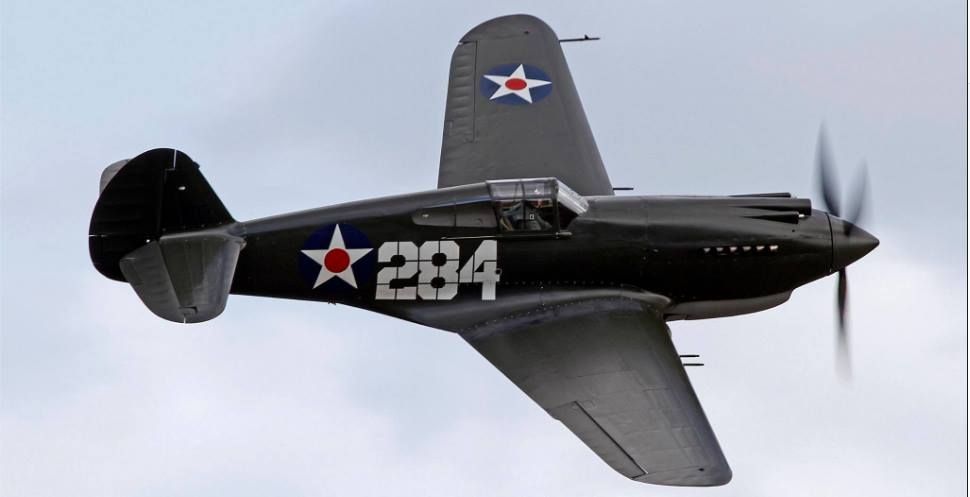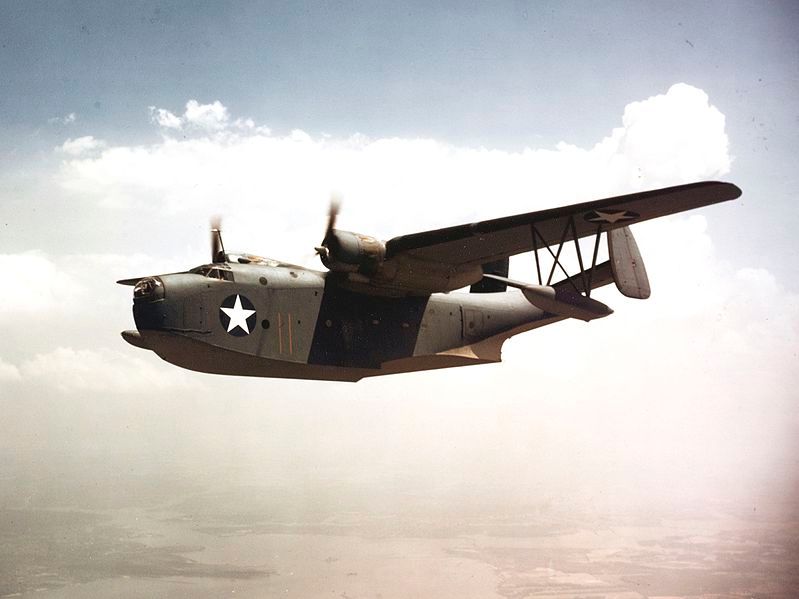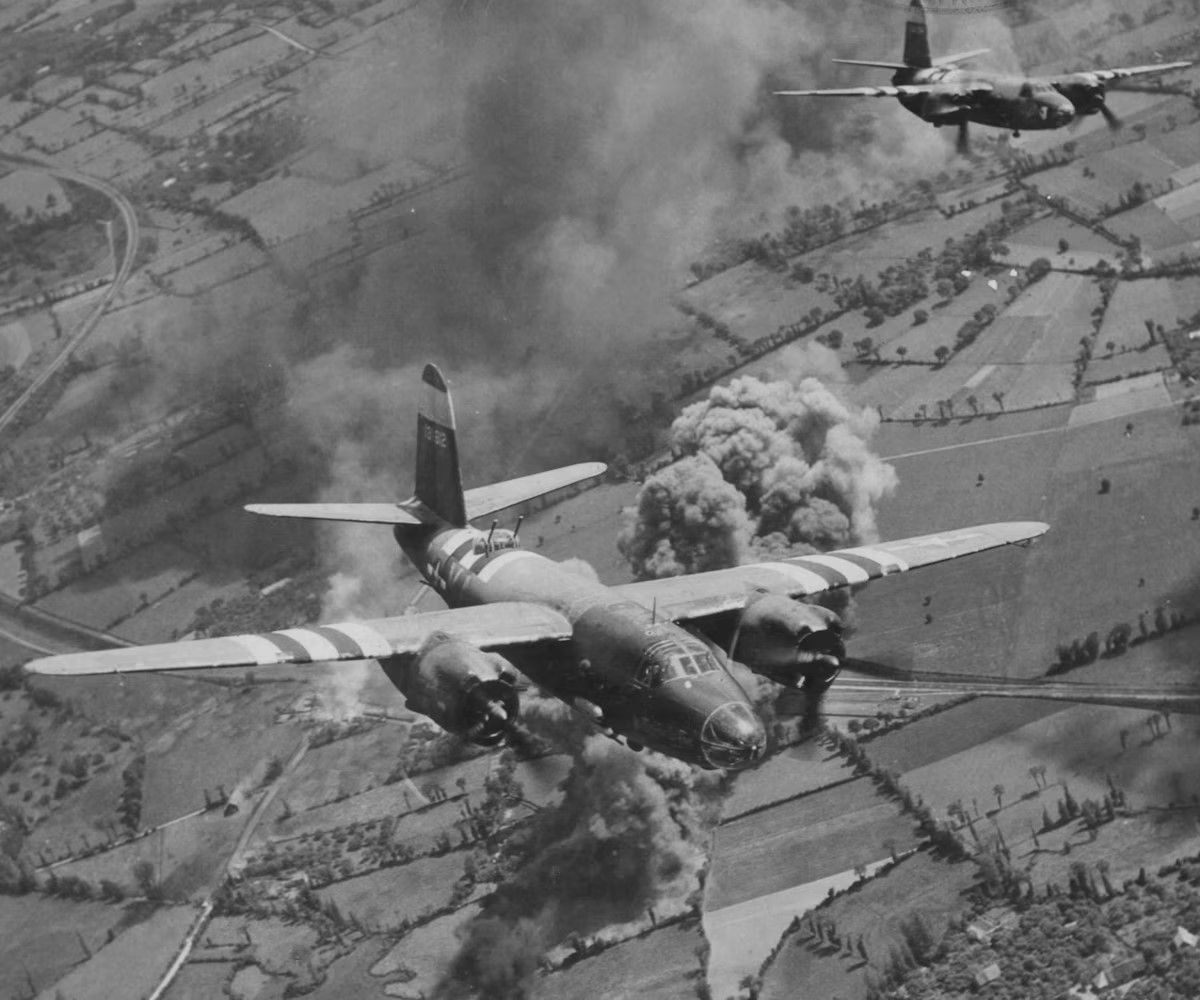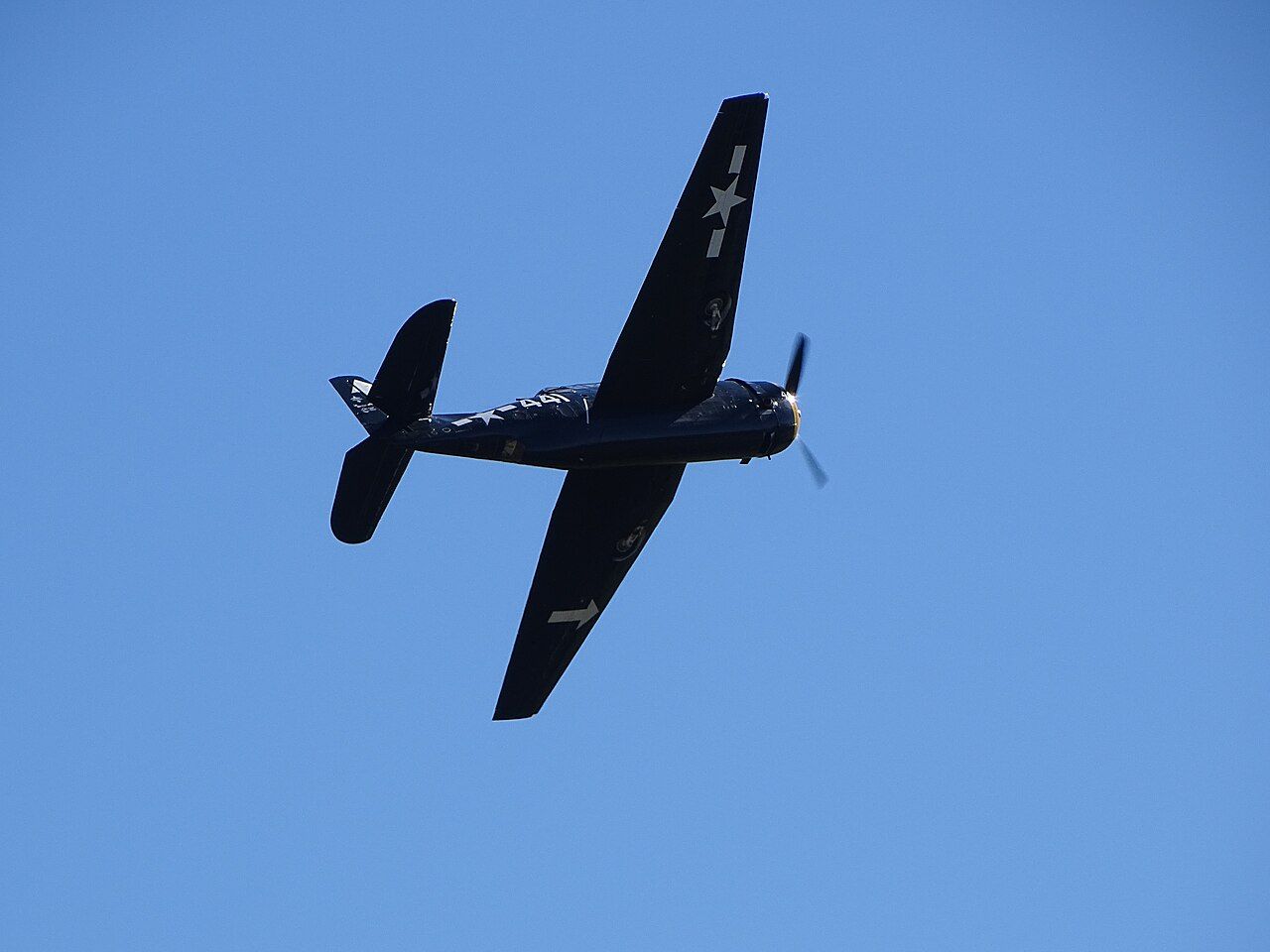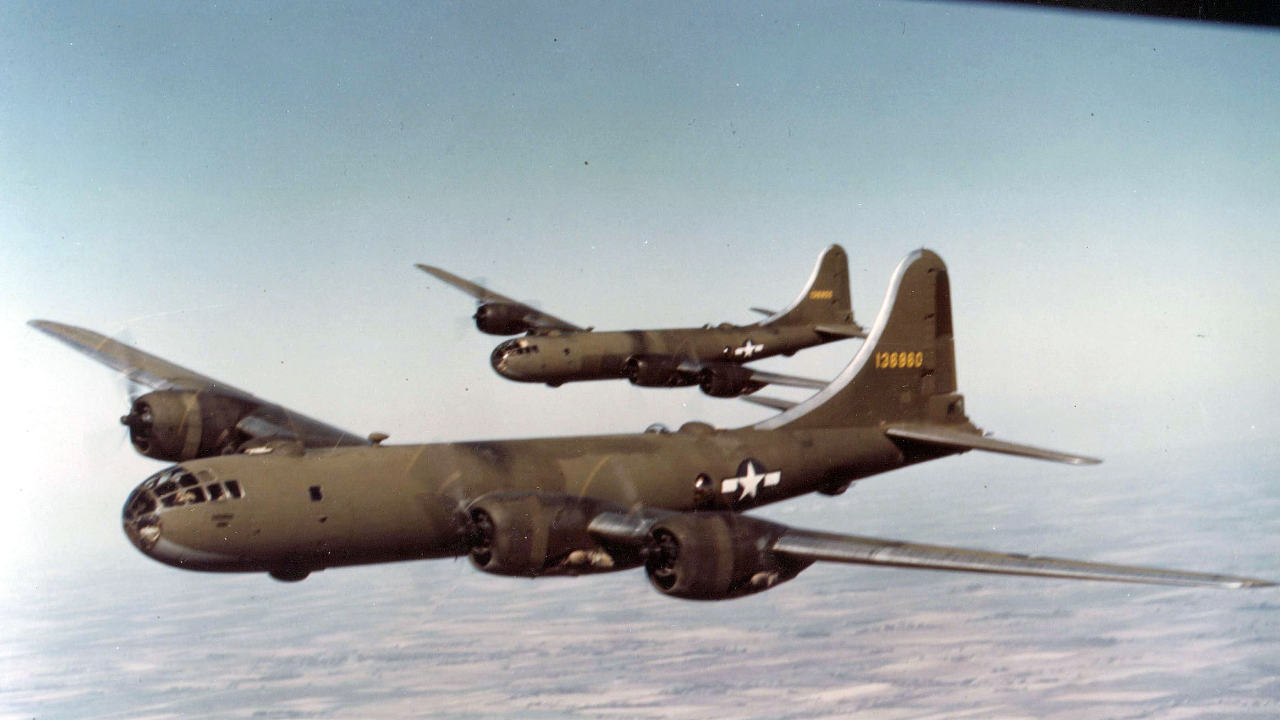Summary
- The Curtiss P-40 Warhawk played a crucial role in response to the Pearl Harbor attacks, breaking Japanese air power.
- Martin PBM Mariner was essential in anti-submarine patrols in the Pacific Theater and engaged in the Bermuda Triangle incident.
- The Grumman TBF Avenger was a highly effective submarine killer, sinking many submarines and super battleships during WWII.
The United States entered the Second World War after the surprise attack by Japanese forces on Pearl Harbor. While the US naval forces were initially caught off guard by the attempt, a large fleet of exceptional aircraft gradually dominated the Pacific Theater. This article notes some of the most prominent bombers of the Pacific Theater during World War II.
1
Curtiss P-40 Warhawk
Year entered service: 1939
- Powerplant: 1 × Allison V-1710-39 V-12 liquid-cooled piston engine
- Engine power: 1,240 hp (920 kW)
- Maximum speed: 361 mph (581 km/h, 314 kn) at 15,000 ft (4,600 m)
- Range: 716 mi (1,152 km, 622 NM)
- Ammunition: Browning machine guns, bombs (up to 2,000 lb)
The Curtiss P-40 Warhawk is a single-engine fighter-bomber used by most Allied powers during World War II. Designed and developed by Curtiss Wright in the late 1930s, the aircraft entered military service in 1939.
The P-40 was one of two aircraft, along with the Grumman F4F Wildcat, that contributed more than any other aircraft in responding to the Pearl Harbor attacks. The Curtiss P-40 was largely credited for breaking Japanese air power during the US retaliation period.
Photo: Kent Lentz | Facebook
While the P-40 was exceptional in its speed and combat performance, it was gradually replaced by the P-38 Lightning, P-47 Thunderbolt, and the North American P-51 Mustang. Between 1939 and 1944, the manufacturer produced over 13,700 examples of the P-40.
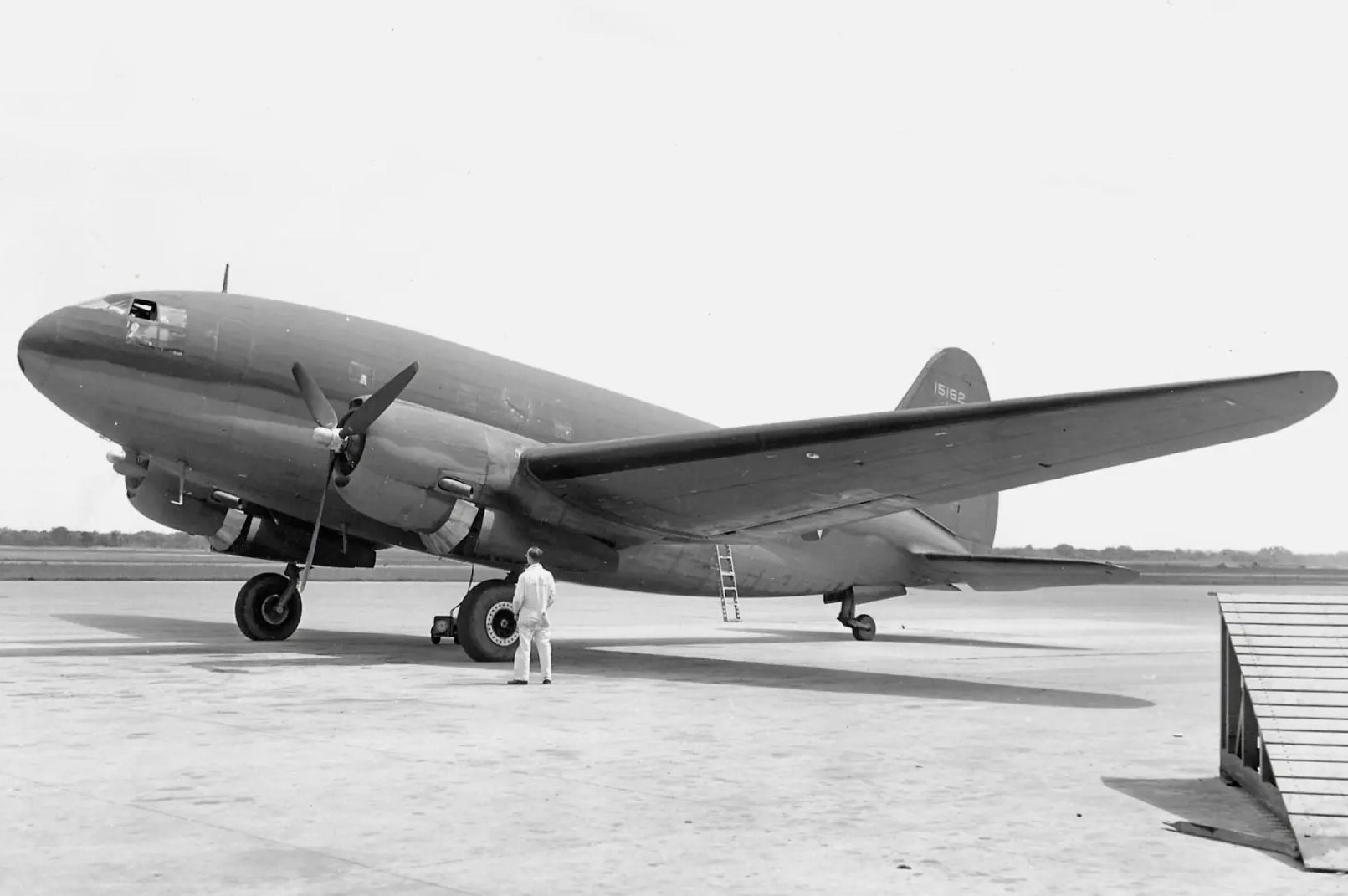
Related
Fleet History: When Northwest Airlines Used To Operate The Curtiss C-46
The C-46 had a short but fascinating life at the former US-based legacy carrier.
2
Martin PBM Mariner
Year entered service: 1940
- Powerplant: 2 × Wright R-2600-6 14-cylinder radial engines
- Power per engine: 1,600 hp (1,194 kW)
- Maximum speed: 178 kn (205 mph, 330 km/h)
- Range: 2,600 NM (3,000 mi, 4,800 km)
- Ammunition: Browning machine guns, bombs, and torpedoes (up to 4,000 lb)
The Martin PBM Mariner is a twin-engine, water-operated bomber designed by Glenn Martin Company for World War II. Entering military service in 1940, the aircraft was heavily used in the Pacific Theater for anti-submarine patrols following the Pearl Harbor attacks.
The PBM aircraft claimed at least ten U-boats during the war, making it one of the prominent aircraft of its time. In December 1945, a Mariner with 13 crew members vanished in the Bermuda Triangle while searching for a group of five TBM Avenger torpedo bombers that disappeared earlier in the month after losing radio contact during a US Navy training flight.
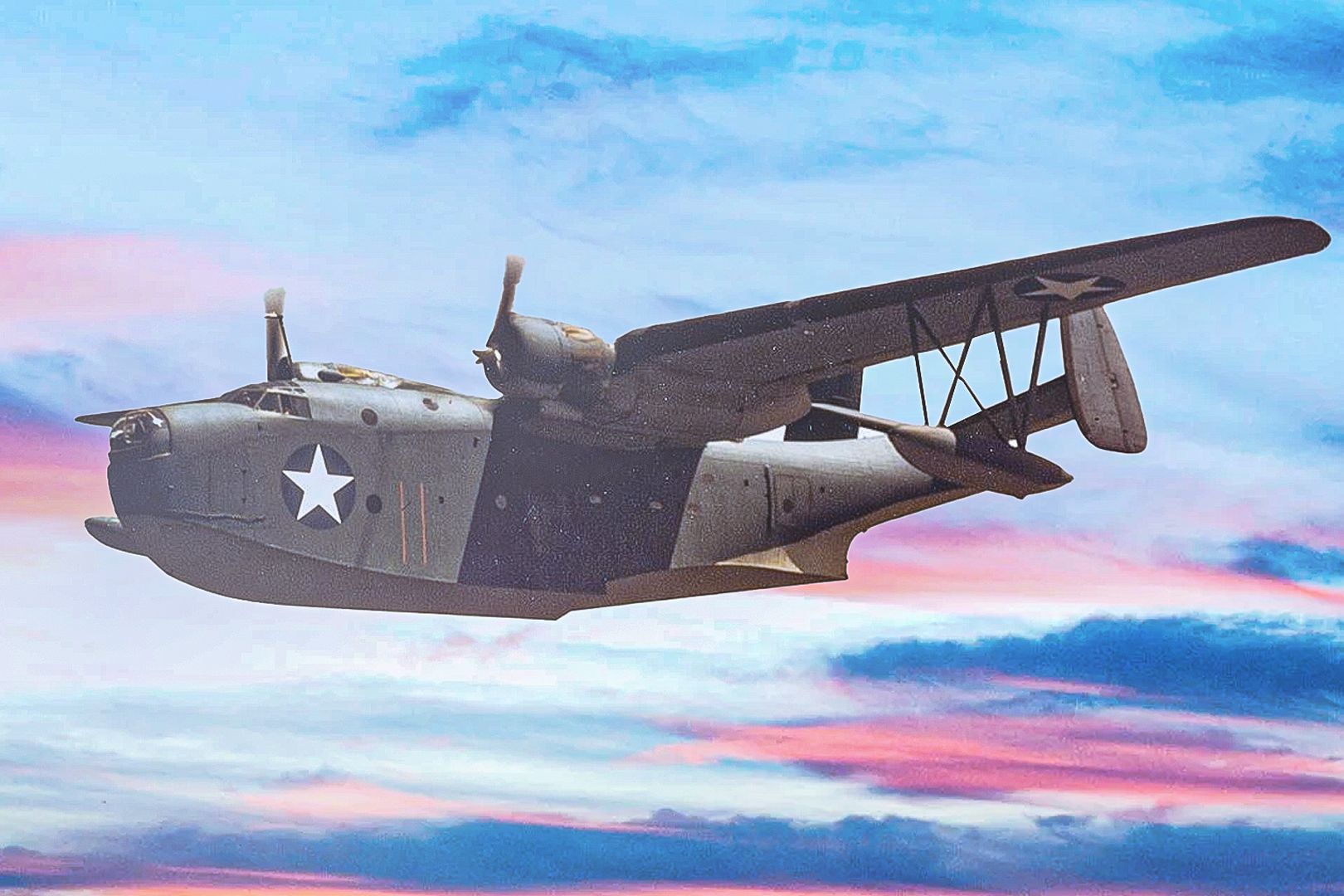
Related
Mystery Of Flight 19: The US Navy Martin PBM Mariner Lost In The Bermuda Triangle
Pity the poor PBM, Not only is the Mariner’s America’s forgotten flying boat of WWII, it’s also the forgotten plane of the Bermuda Triangle.
More than 1,360 PBM bombers were manufactured between 1940 and 1949, making them one of the most formidable bombers of World War II.
3
Martin B-26 Marauder
Year entered service: 1941
- Powerplant: 2 × Pratt & Whitney R-2800-43 Double Wasp 18-cylinder radial piston engines
- Power per engine: 2,000–2,200 hp (1,500–1,600 kW) each
- Maximum speed: 287 mph (462 km/h, 249 kn) at 5,000 feet (1,500 m)
- Combat range: 1,150 mi (1,850 km, 1,000 NM) with 3,000 pounds (1,400 kg) bombload and 1,153 US gal (4,365 L) of fuel
- Ammunition: Machine guns, and bombs up to 4,000 lb (1,800 kg).
The Martin B-26 Marauder is a twin-engine medium-sized bomber that was extensively used during the Second World War. Designed and developed by Glenn Martin Company in the late 1930s, the aircraft first saw action in the Pacific Theater in 1942.
Photo: National Museum of the United States Air Force
A large fleet of B-26 Marauders was deployed in the South West Pacific immediately following Japan’s attack on Pearl Harbor. The B-26’s range and fuel efficiency made it an early success on overwater operations.
Some B-26s were fitted with more auxiliary fuel tanks for enhanced range, as well as the ability to carry aerial torpedoes. Over 5,200 examples of the Marauders were produced between 1941 and 1945.

Related
Throwback: When A B-36 Bomber Crash Landed On The Outskirts Of Salisbury
In February 1953, a Convair B-36 Peacemaker almost crash-landed in Salisbury, UK.
4
Grumman TBF Avenger
Year entered service: 1942
- Powerplant: 1 × Wright R-2600-8 Twin Cyclone14-cylinder air-cooled radial piston engine
- Engine power: 1,700 hp (1,300 kW)
- Maximum speed: 278 mph (447 km/h, 242 kn)
- Range: 905 mi (1,456 km, 786 NM) at cruise speed
- Ammunition: Browning machine guns, forward-firing, and high-velocity aerial rockets, bombs, or torpedoes up to 2,000 lb (907 kg).
The Grumman TBF Avenger is a single-engine bomber developed by Grumman for the US military during World War II. It entered military service in 1942 and was initially deployed in the Battle of Midway. The United States Navy aircraft, including the TBF, inflicted devastating damage on the Japanese fleet following the attack on Pearl Harbor.
Powered by a Wright R-2600-8 radial engine, the aircraft was recognized as the most effective submarine killer during the Second World War. The TBF was responsible for sinking many submarines, including two super battleships, Yamato and Musashi. There were 9,839 TBF produced in the 1940s.
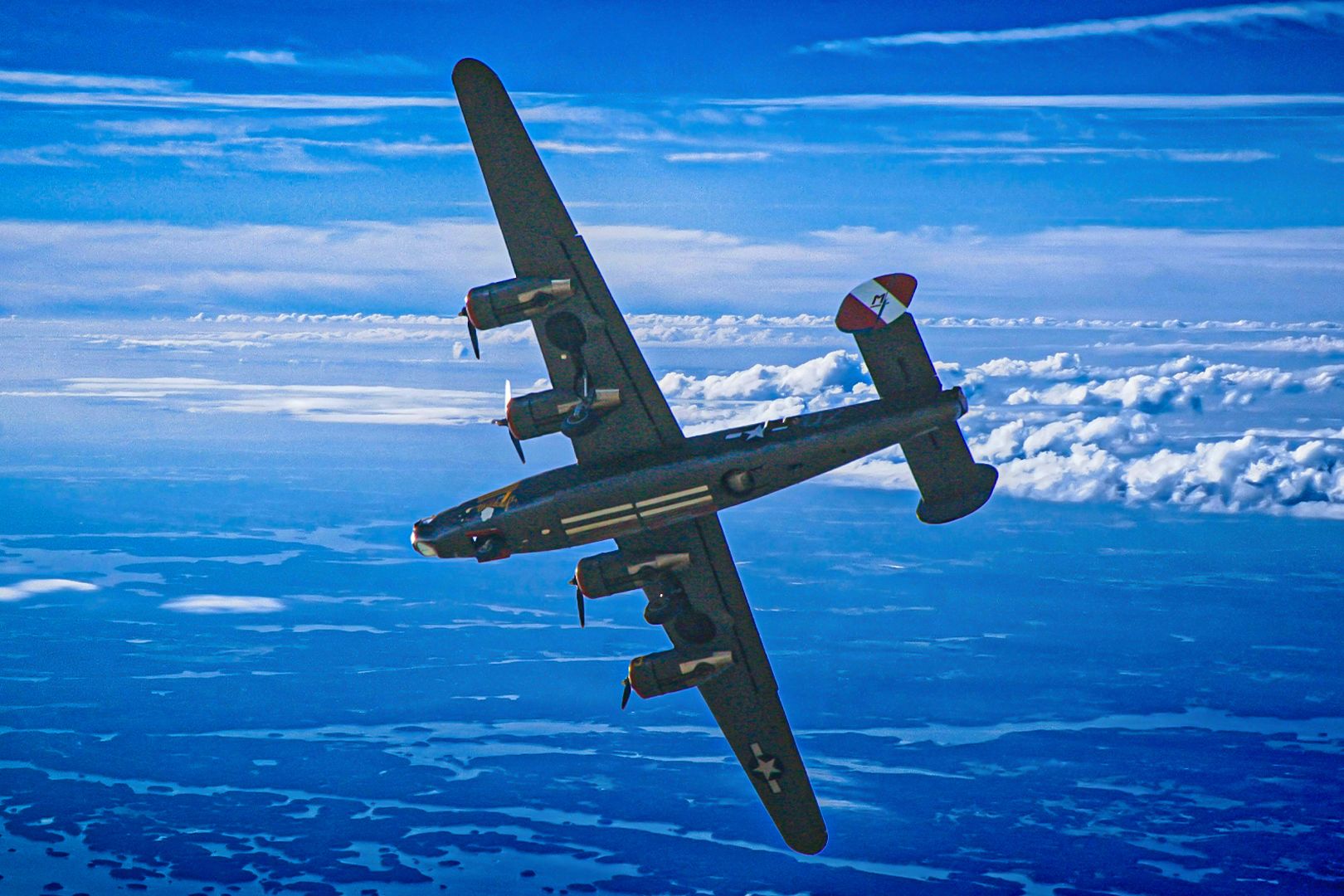
Related
Top 5: The Longest-Range Aircraft Of WWII
Did you know that there was a WWII aircraft that could cover distances of up to 9,700 nautical miles?
5
Boeing B-29
Year entered service: 1944
- Powerplant: 4 × Wright R-3350-23 Duplex-Cyclone 18-cylinder air-cooled turbo supercharged radial piston engines
- Power per engine: 2,200 hp (1,600 kW)
- Maximum speed: 357 mph (575 km/h, 310 kn)
- Range: 3,250 mi (5,230 km, 2,820 NM)
- Ammunition: Browning machine guns, bombs (up to 20,000 lb)
The Boeing B-29 Superfortress is a four-engined fighter designed and developed by Boeing in the early 1940s. The propeller-driven heavy bomber was designed as an extension of the B-17 Flying Fortress. The high-altitude strategic bomber excelled in its missions throughout the Second World War, particularly in dropping naval mines to limit Japan.
According to The National WWII Museum,
“Naval and air strikes reduced most of the Japanese bases throughout the area, and after several intense, bloody campaigns, most of the central Pacific was secure. As the islands in the Marshall and Mariana chains fell to US Army and Marines forces by that summer, troops constructed airfields in preparation for air strikes on Japan itself.”
“The Marianas were a particularly valuable asset since they were close enough to Japan for the United States’ new, technologically advanced B-29 bombers to reach the mainland.”
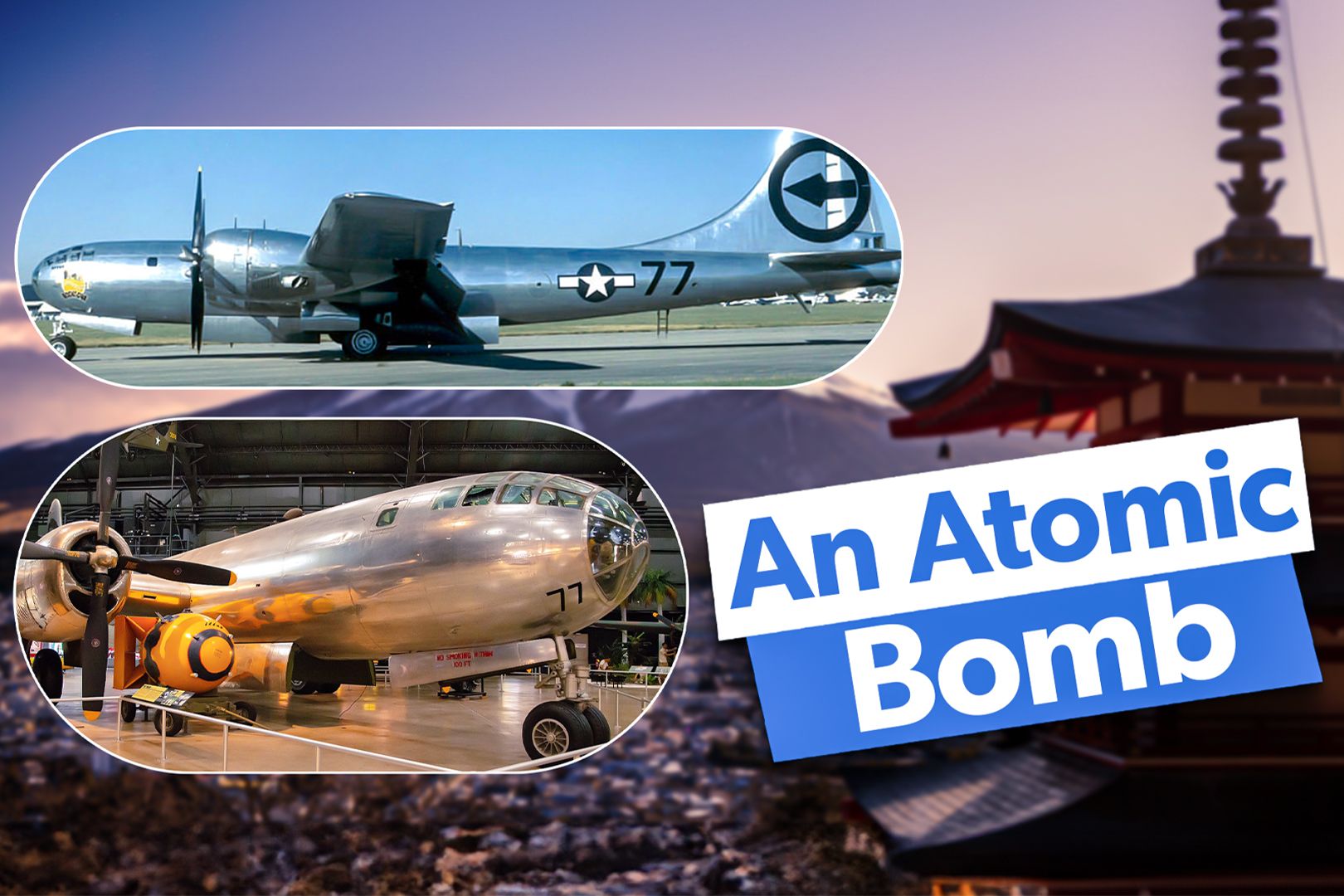
Related
Bockscar: The Story Of The Other USAAF B-29 To Drop An Atomic Bomb In Japan
Bockscar was the second B-29 bomber to drop an atomic bomb on Japan.
The Boeing B-29 was the only aircraft ever to use nuclear weapons in combat, dropping atomic bombs over the Japanese cities of Hiroshima and Nagasaki in August 1945.
The manufacturer produced 3,970 B-29 Superfortress bombers between 1943 and 1946, making the aircraft remain in service in various roles even after the war. The Royal Air Force also utilized numerous B-29s between 1950 and 1954. The type eventually retired from service in the early 1960s.

